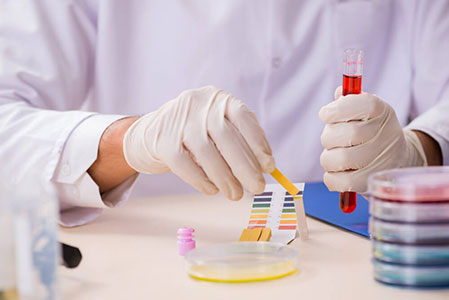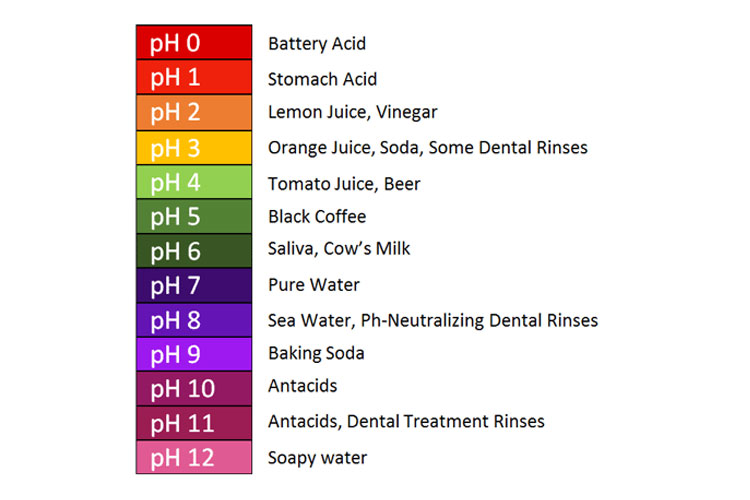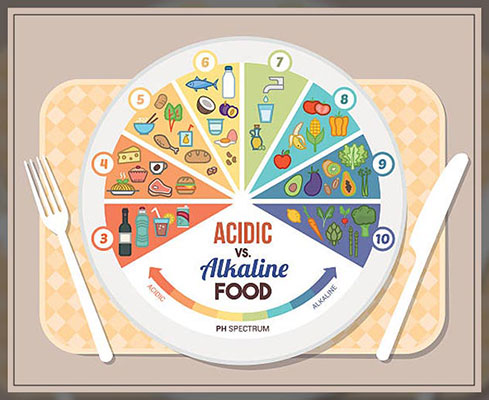What is pH?
The acronym pH stands for potential hydrogen. It describes a substance’s chemical acidity level vs. alkalinity level. The pH level of “14” is the highest alkalinity, and the pH level of “0” is the most elevated acidity. In the middle of the spectrum is pH “7”, the pH level for purified water.
For instance, black coffee and vinegar are acidic and fall beneath pH 7. On the other hand, seawater and antacids are alkaline and sample above pH 7. With a pH just above 7, healthy human blood is slightly on the alkaline side.
What is the pH of Saliva?
The typical pH range for Saliva is “6.2 to 7.6”. Food and drink change the pH level of Saliva. For instance, microbes in your mouth break down the carbohydrates you ingest, releasing lactic acid, butyric acid, and aspartic acid. As a result, it decreases the pH level of your Saliva. Also, age may play a factor. For instance, adults tend to have more acidic Saliva than youngsters.
What is pH balance?
Water comprises about 60% of the human body. Therefore, it needs a pH close to water to sustain life.
Low pH
If there’s too much acid present in the blood (low pH level), metabolic acidosis occurs. It is associated with high blood pressure, kidney disease, diabetes, and other conditions.
High pH
Metabolic alkalosis occurs if there’s too much alkaline in the blood (high pH level). It correlates with adrenal disease and alcohol abuse.

Why should I care about the pH of my Saliva?
Like the rest of your body, your mouth needs a balanced pH. The pH level of your Saliva can drop below “5.5” when you’re drinking acidic beverages. When this happens, the acids in your mouth demineralize (break down) tooth enamel.
If the tooth enamel becomes too thin, the dentin is exposed. As a result, it can lead to discomfort when consuming hot, cold, or sugary drinks.
Examples of acidic food and drink include:
- American cheese (pH 5).
- Soft drinks (pH 3).
- Cherries (pH 4).
- White wine (pH 4).

Symptoms of unbalanced saliva pH
Some indications that your saliva pH is out of balance include:
- Sensitivity to hot or cold food or beverages.
- Tooth cavities.
- Persistent bad breath.
How do I find out the pH of my Saliva?
To test the pH of your Saliva, you’ll need pH strips available at your drugstore or online. Once you have a pH strip, follow these steps:
- Do not eat or drink for a minimum of two hours before testing.
- Fill your mouth with Saliva and then swallow or spit it out.
- Fill your mouth with Saliva again, and then place a small amount of it on a pH strip.
- The strip will change colors based on the acidity/alkalinity of your Saliva. The outside of the box of pH strips will have a color chart. Match the color of your pH strip to the color chart to determine your Saliva’s pH level.

How do I keep a balanced pH in my mouth?
To keep a balanced pH level in your mouth, you could consume only foods and beverages with a midrange pH. However, that would be boring and most likely deprive you of essential minerals and vitamins.
A more acceptable idea would be adjusting your behavior with certain foods and drinks, such as:
- Avoid sugary soft drinks. But if you can’t resist, down them and follow up with a glass of water. Try not to sip the sugary beverages over an extended period.
- Avoid black coffee. Adding dairy, not a sugary flavored creamer, can help counteract the acidity.
- Don’t brush. Avoid brushing your teeth after drinking high-acidity beverages such as soft drinks, fruit juices, cider, wine, or beer. High-acidity drinks soften your tooth enamel. Brushing too soon after consuming these drinks can further damage the enamel.
- Chew gum. After eating or drinking acidic foods or beverages, chew sugarless gum — preferably one with xylitol. Chewing gum encourages saliva production to help restore pH balance. It’s believed that xylitol prevents bacteria from sticking to tooth enamel and promotes saliva production.
- Stay hydrated. Drink plenty of pH seven water.
Saliva pH as a diagnostic tool
You can use your salivary pH as a diagnostic biomarker. The study showed that the pH level of saliva changes based on the severity of a person’s periodontal disease.
https://images.app.goo.gl/8fgrpWnaMr6AJZrJ6 The takeaway
Proper pH-balanced Saliva (6.2 to 7.6) helps maintain a healthy mouth and protect your teeth. Testing your salivary pH with test strips is simple, and there are several easy lifestyle alterations you can make to assist in keeping your saliva pH balanced.
Reference:
https://www.healthline.com/health/ph-of-salivaLatest posts by Dr. Allan Hawryluk (see all)- St. Lawrence Dentistry Looks Forward To St. Patrick’s Day! - March 12, 2025
- Understanding Dental X-Rays and Radiation: What You Should Know - January 13, 2025
- Happy New Year from St. Lawrence Dentistry! - December 30, 2024











